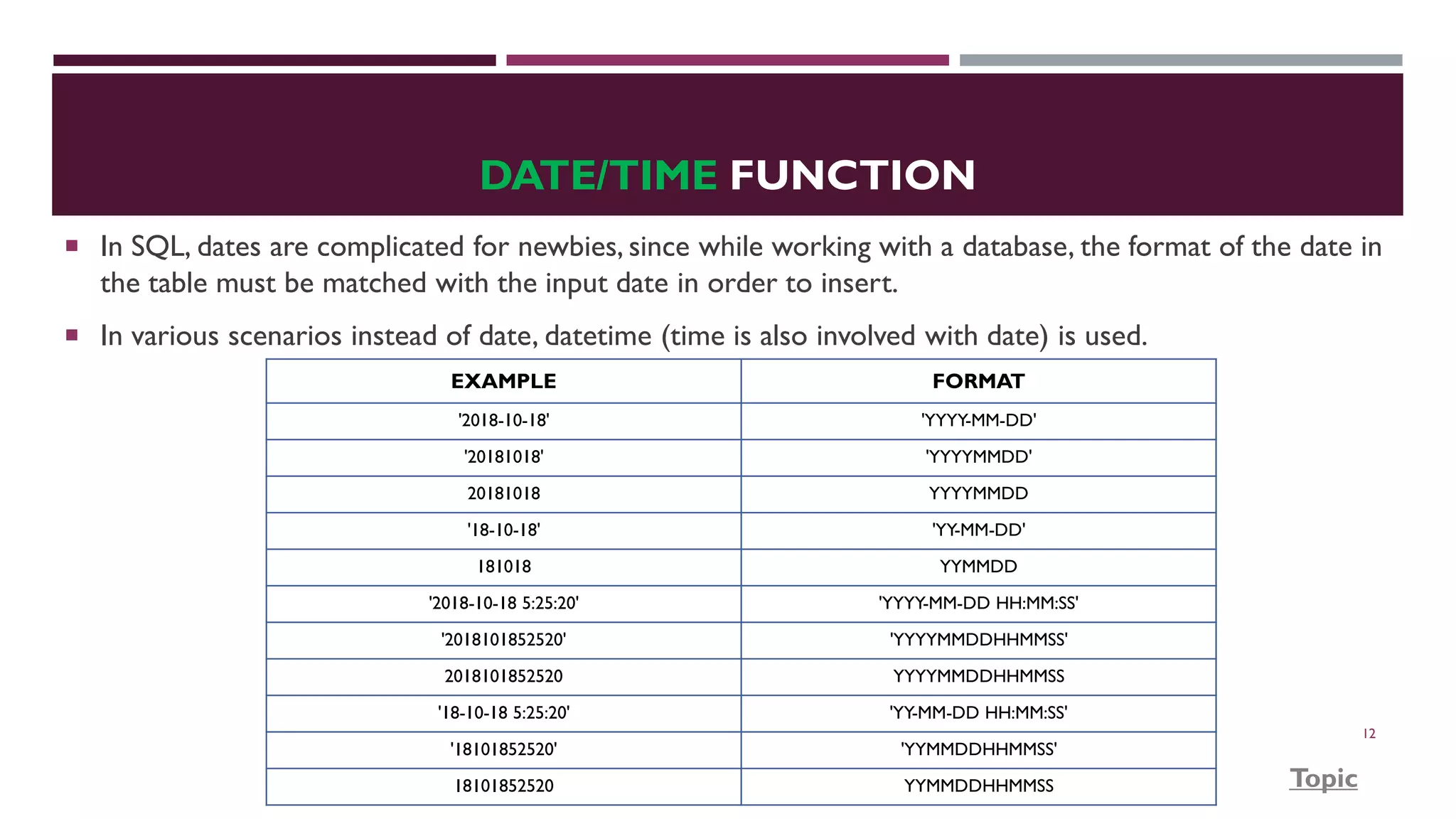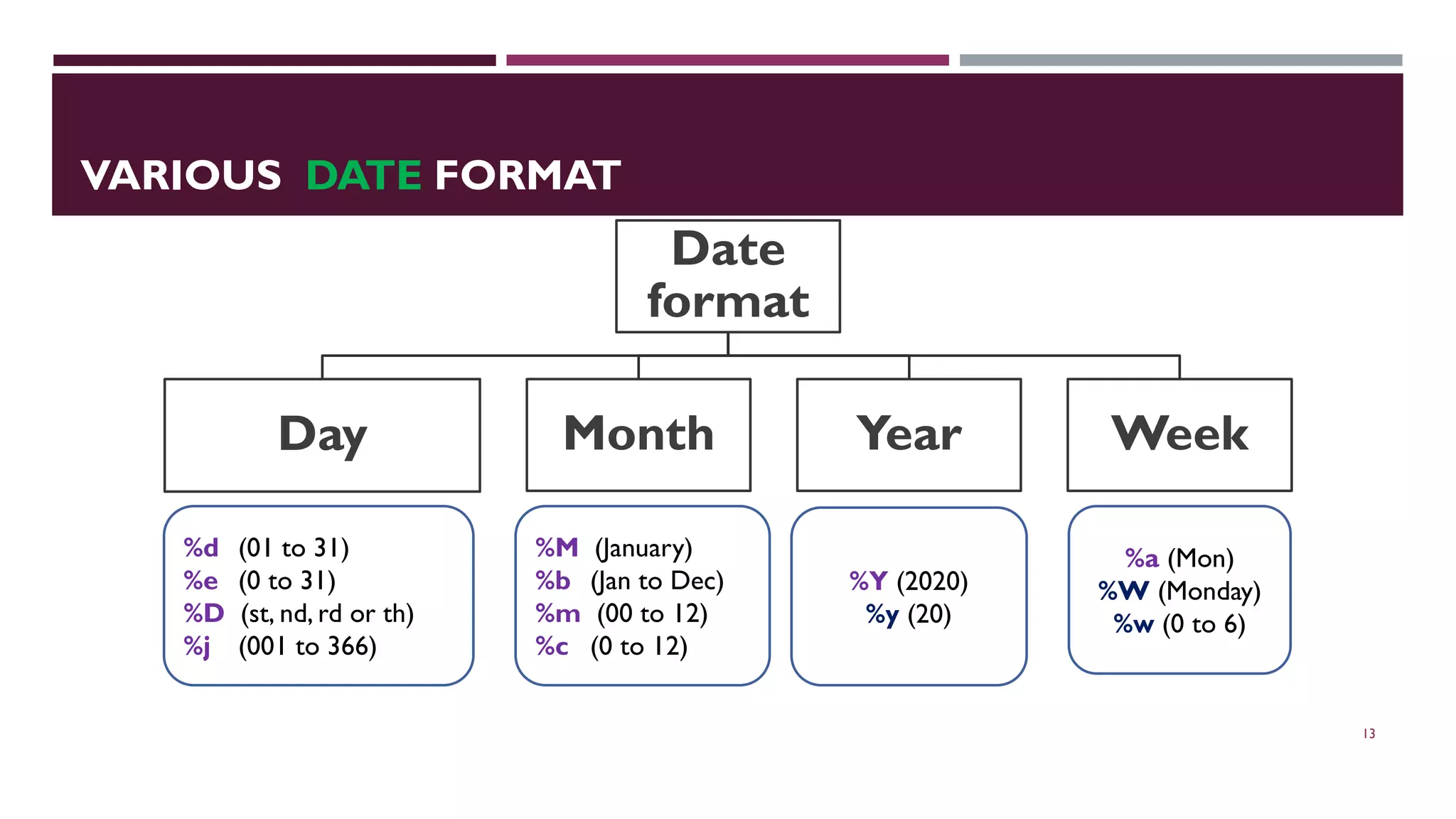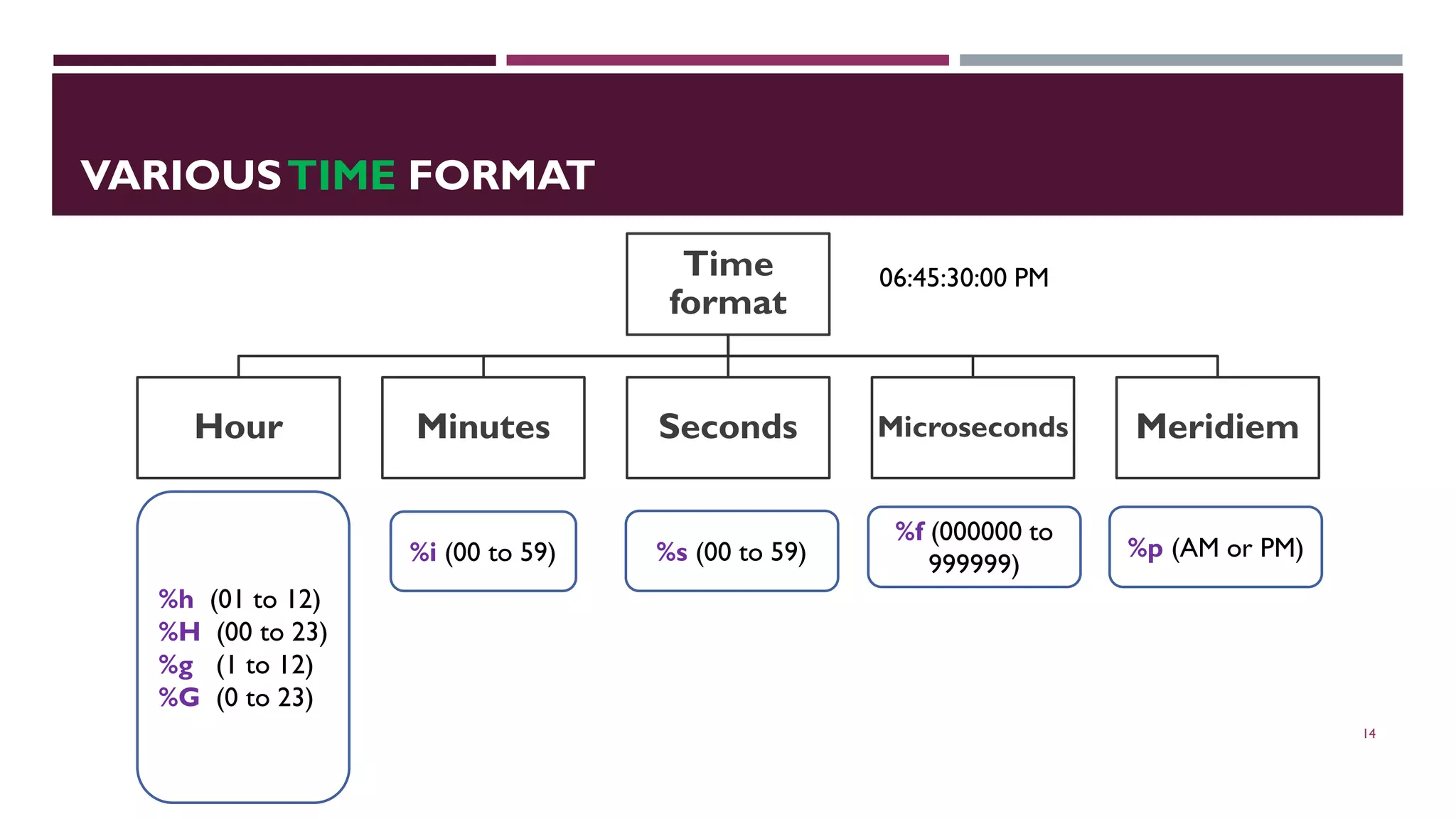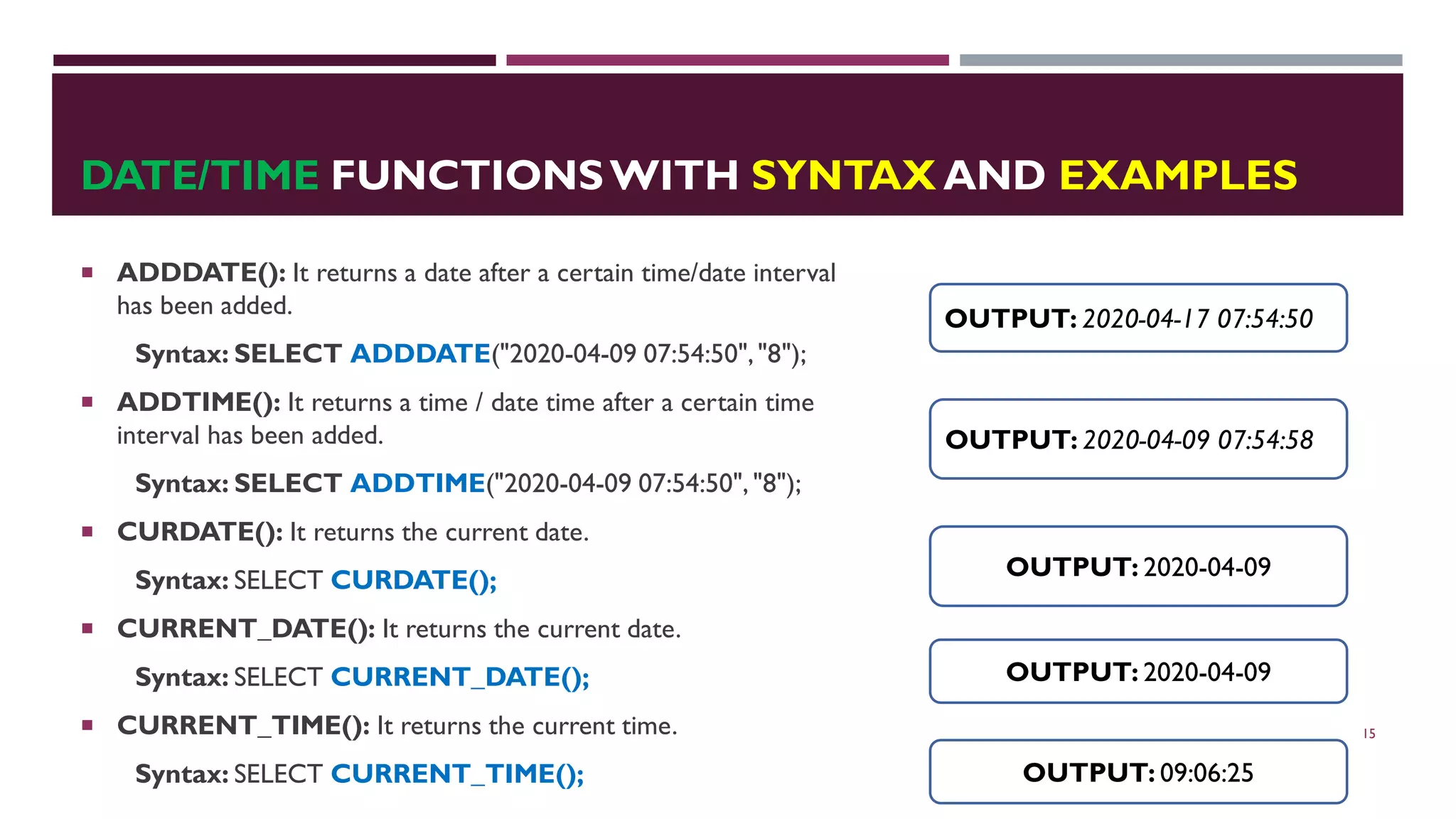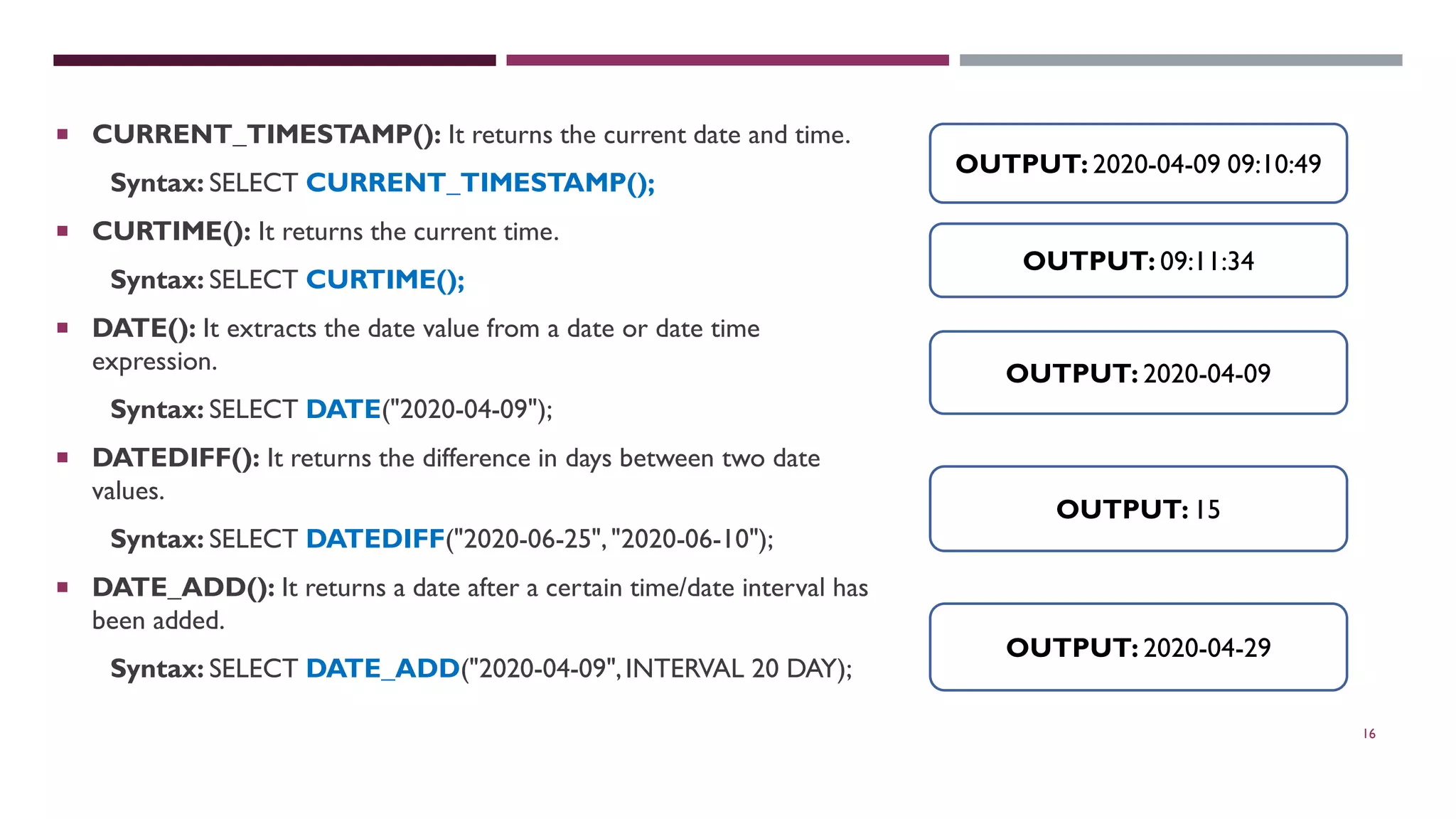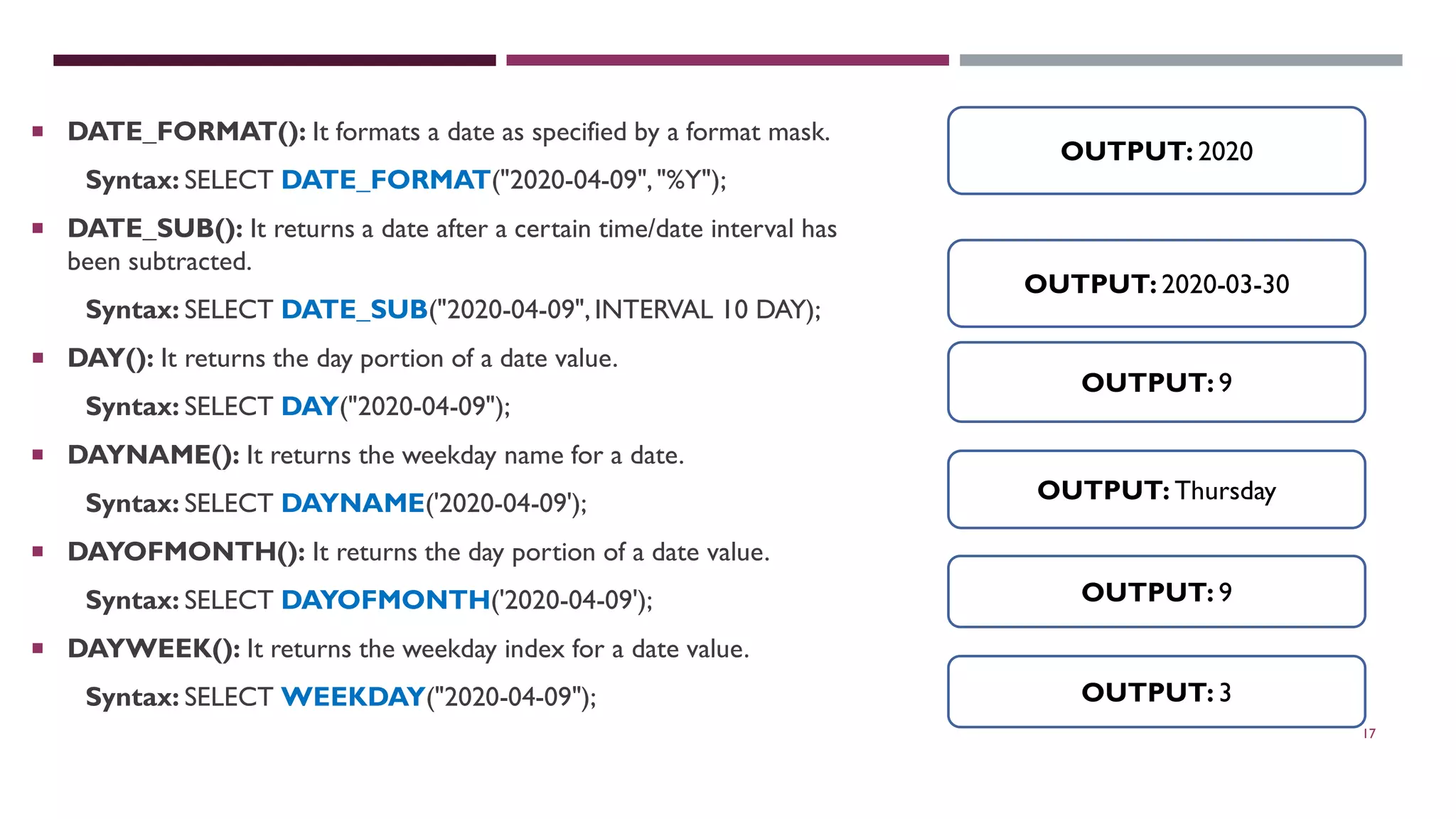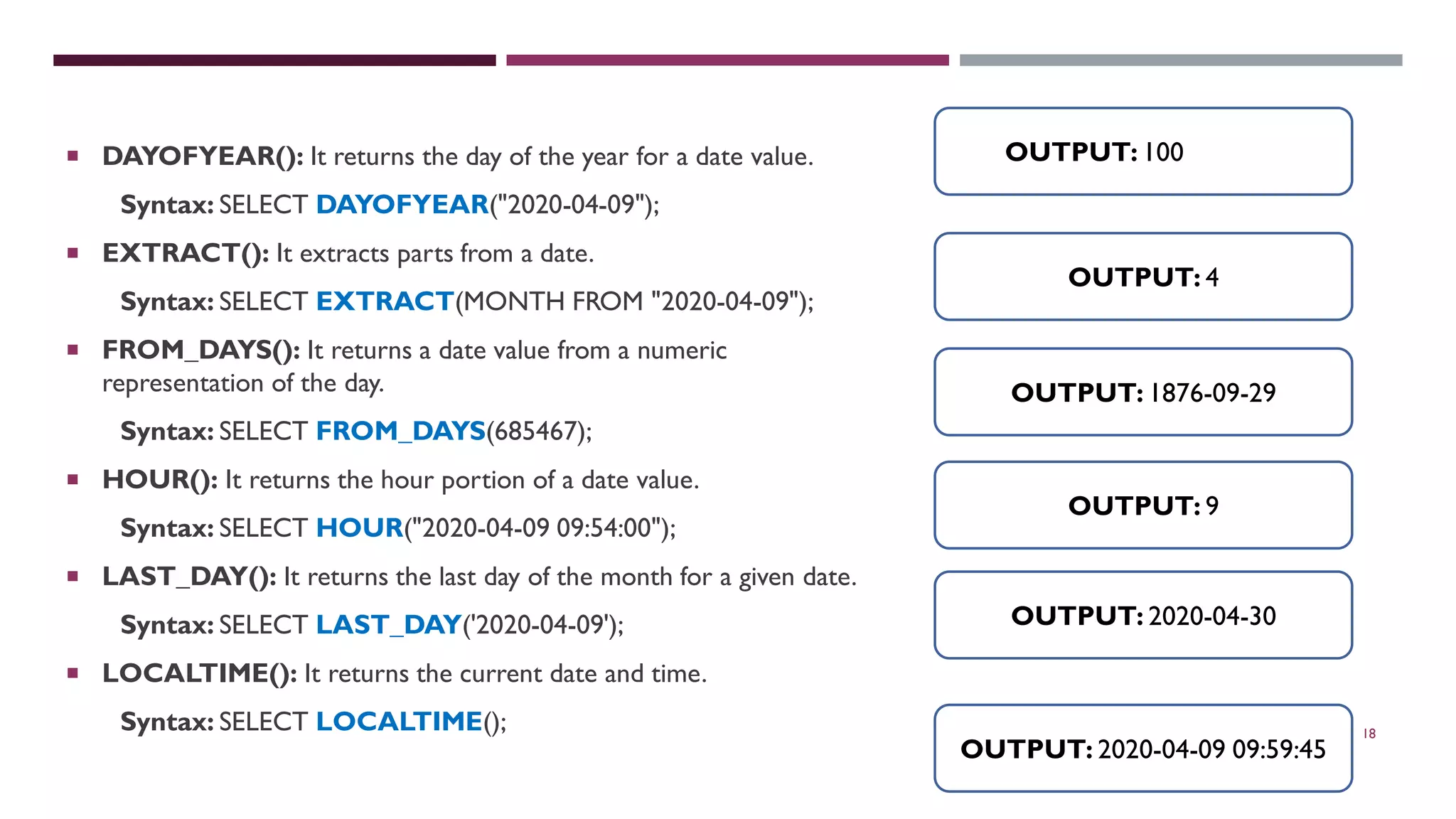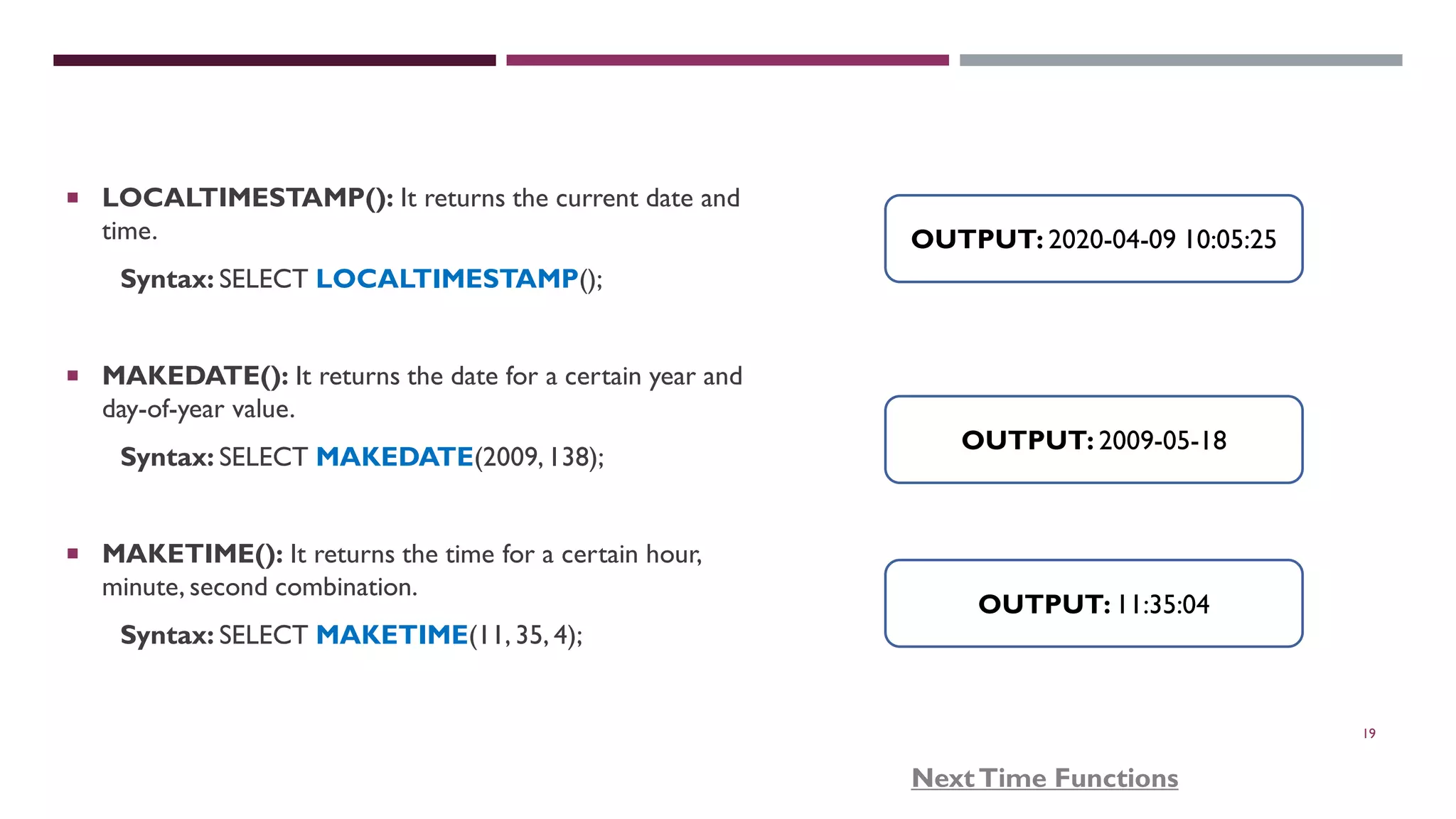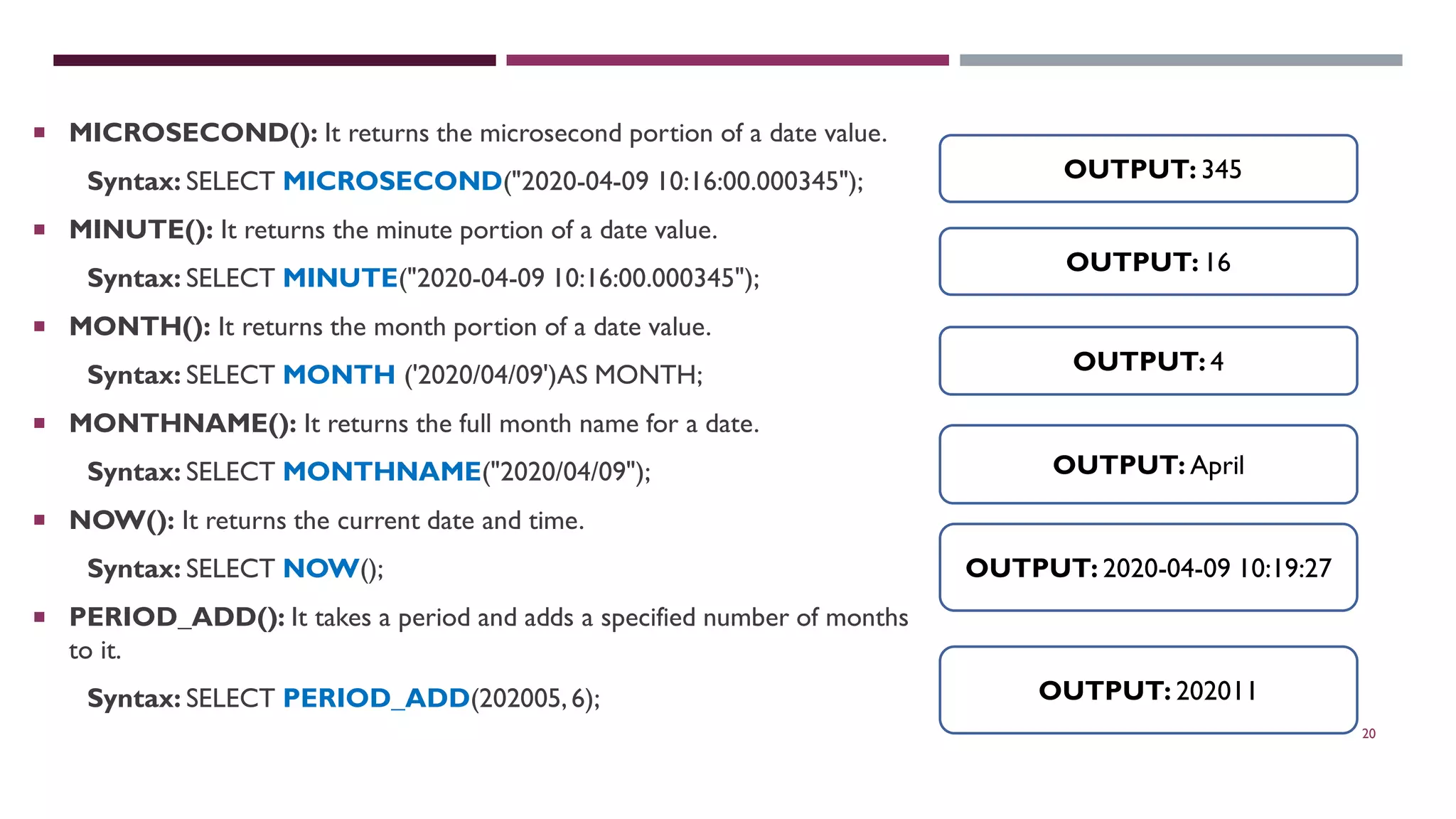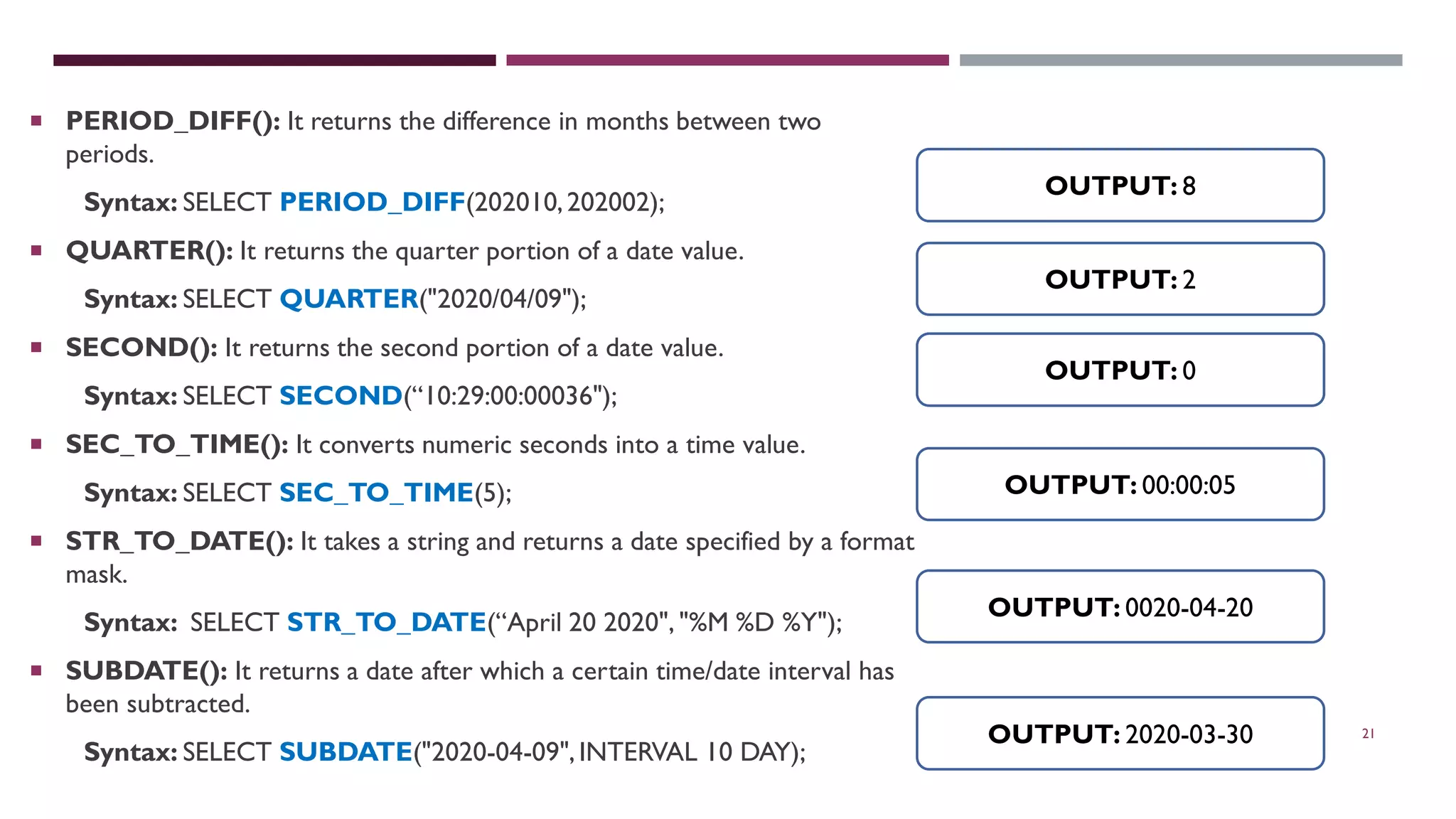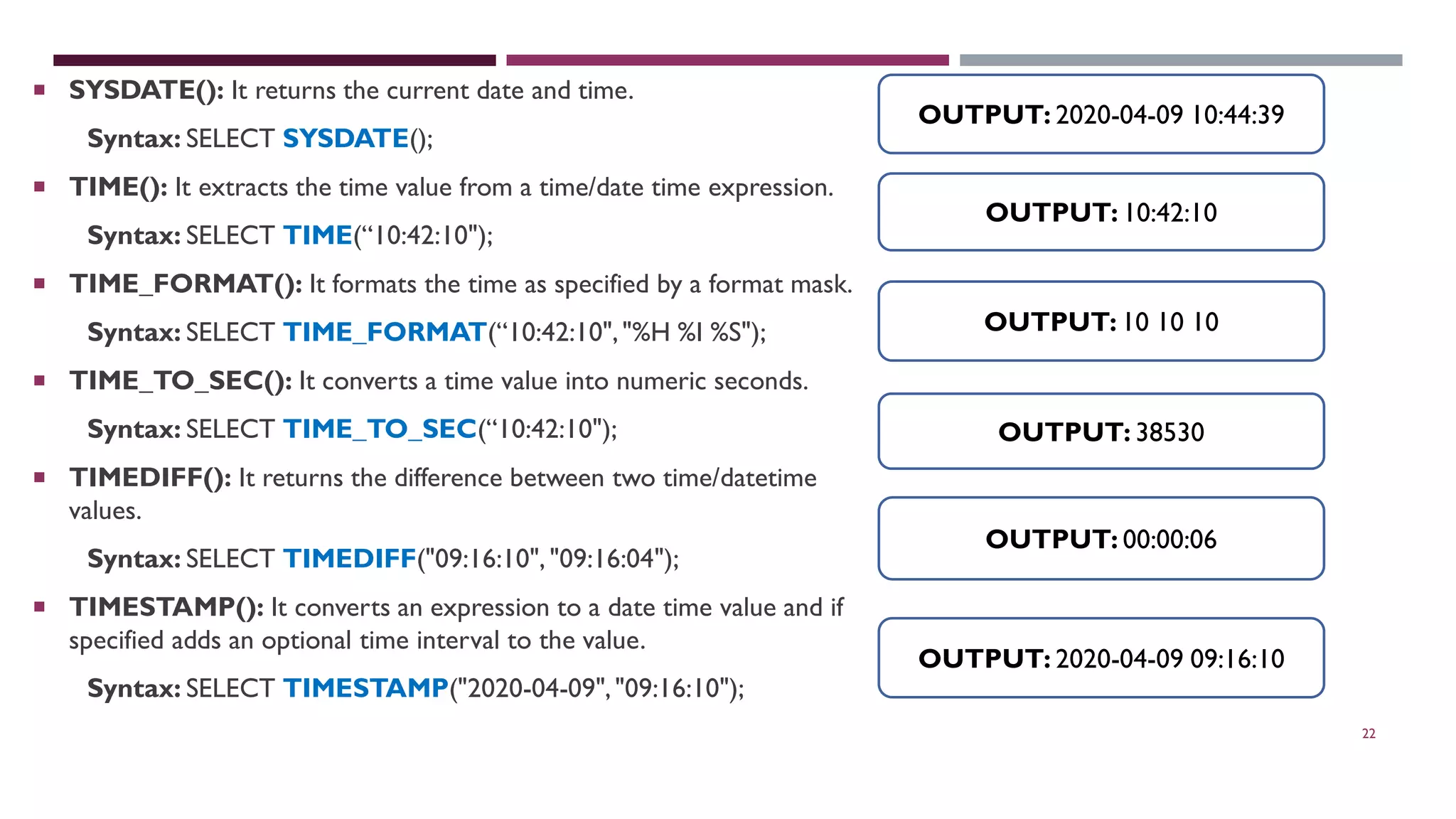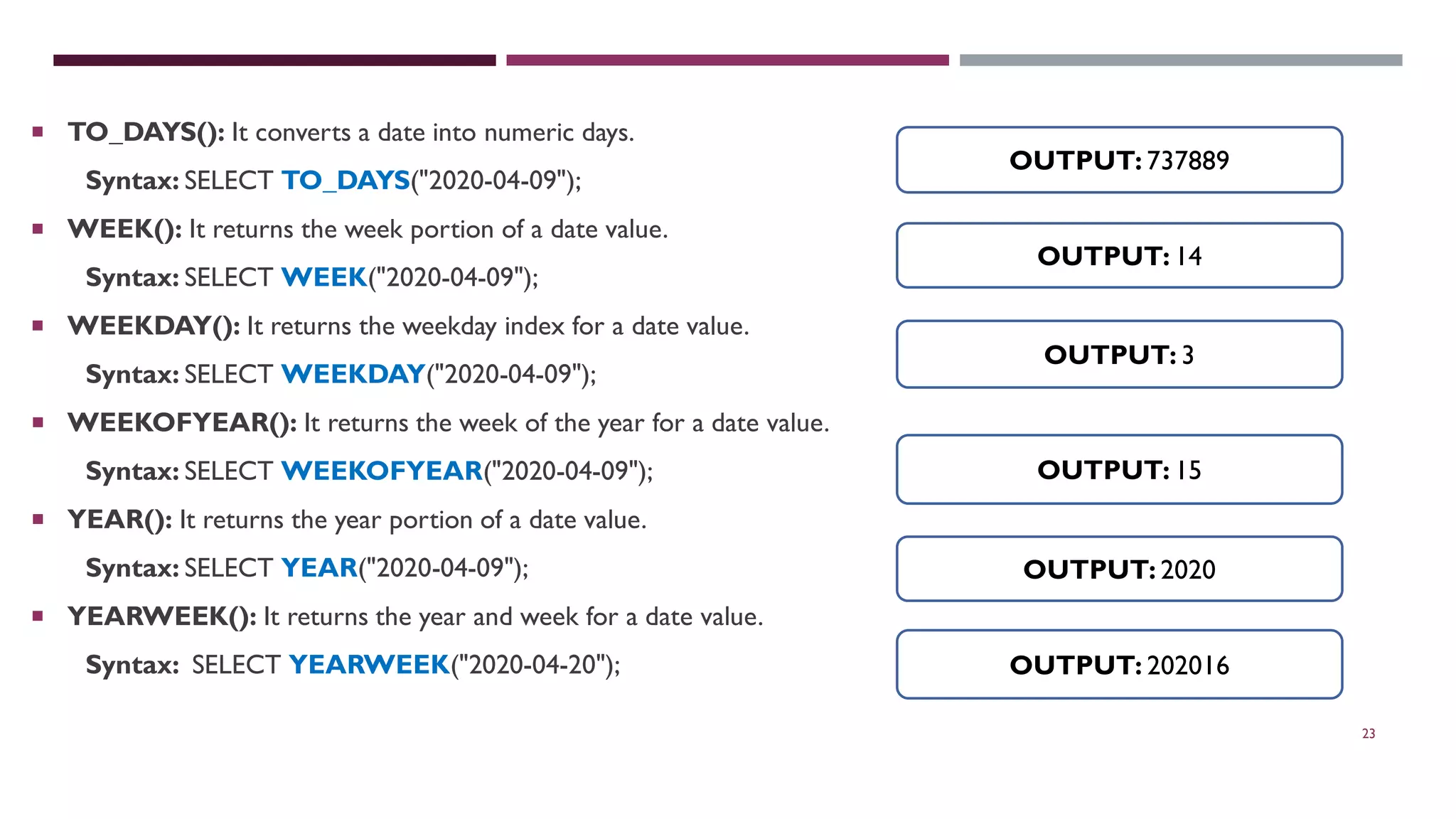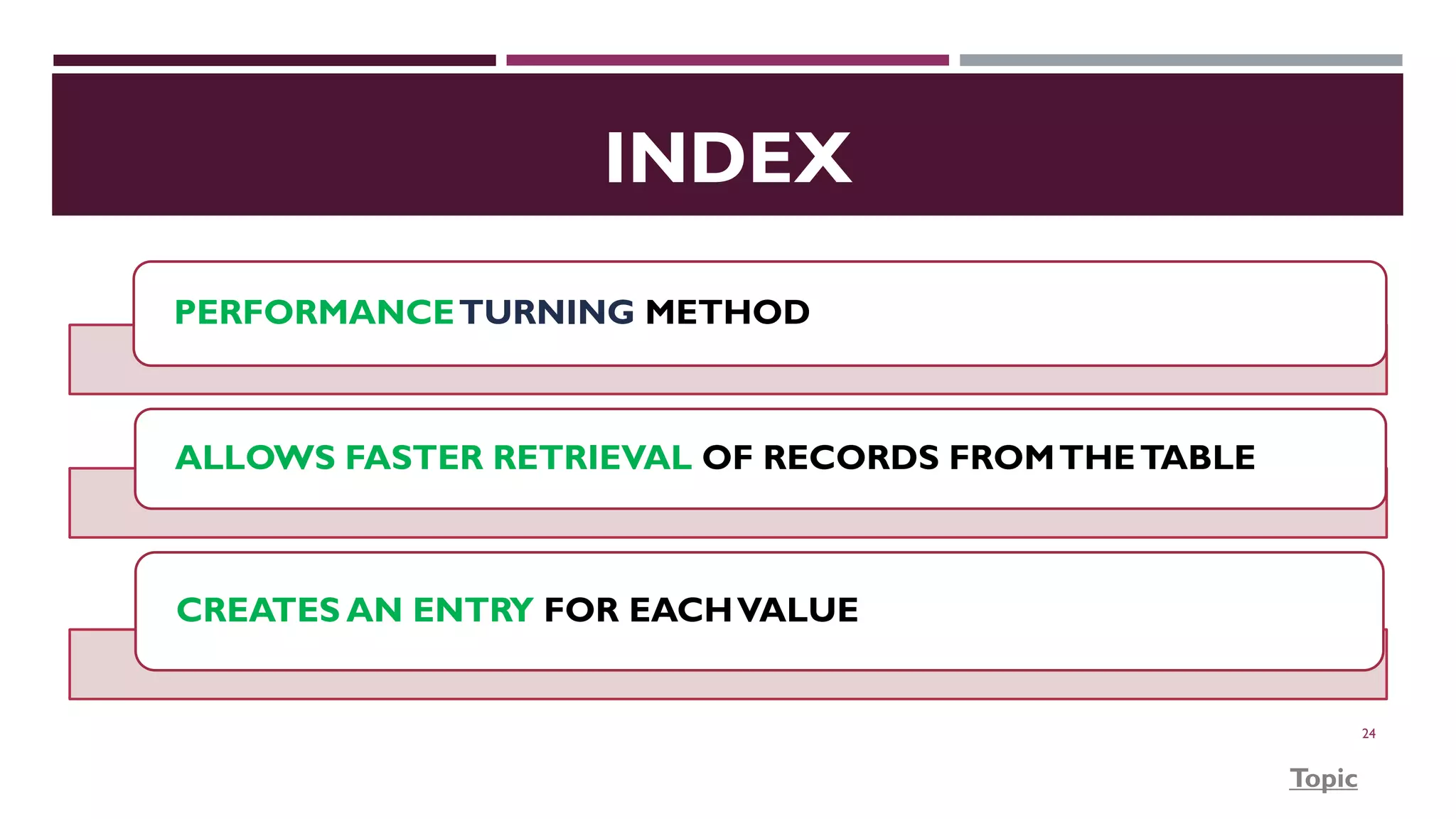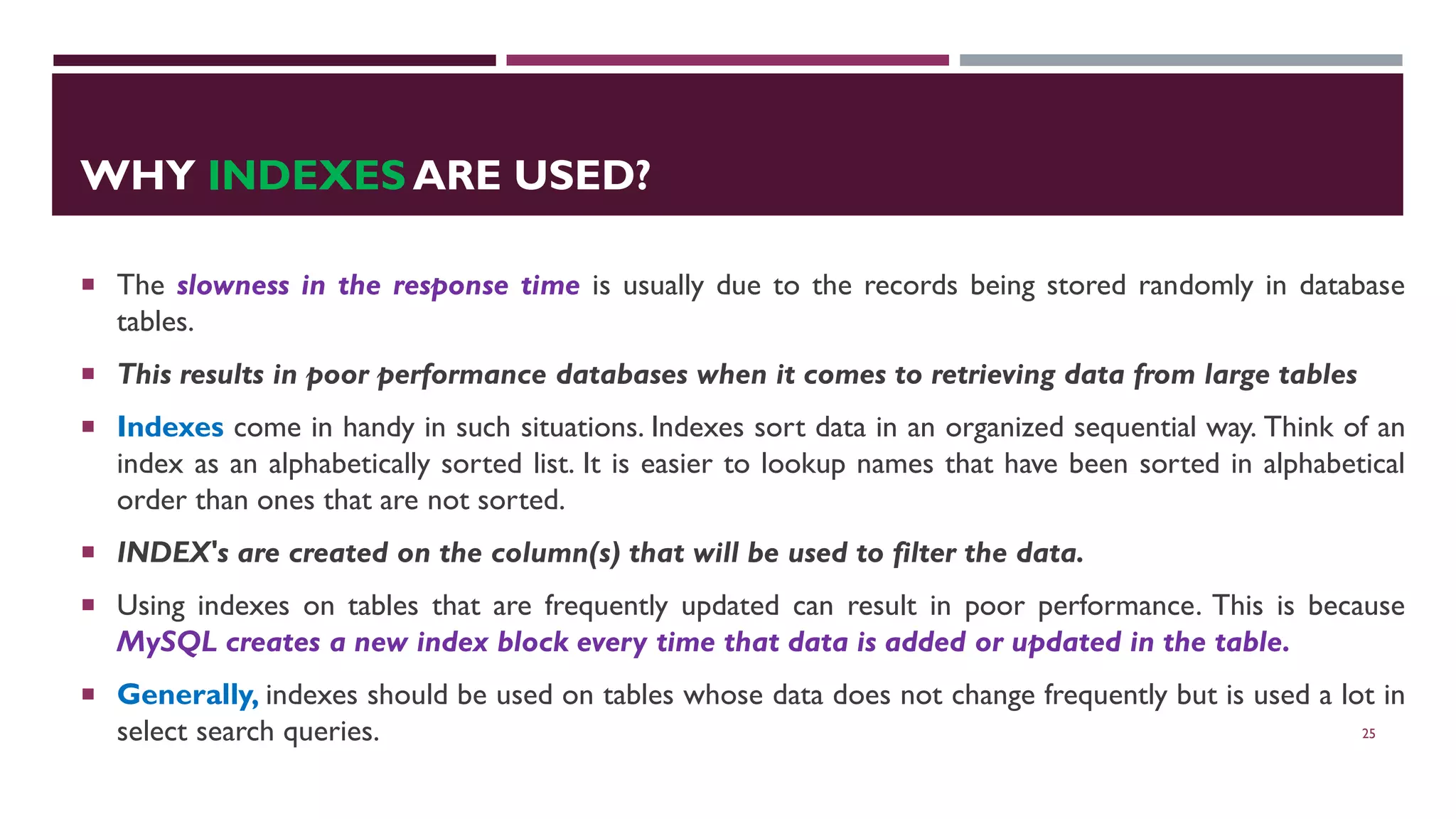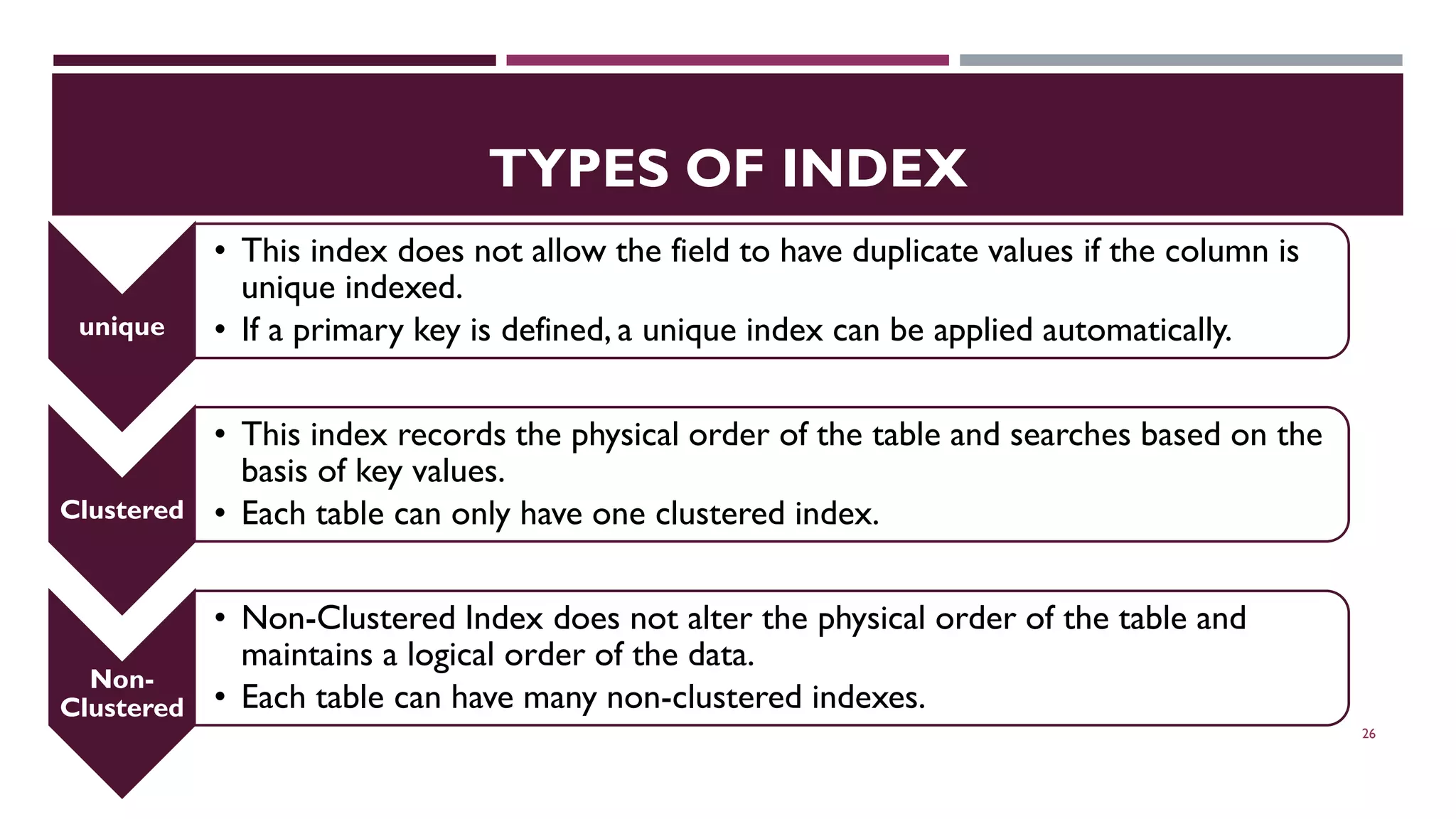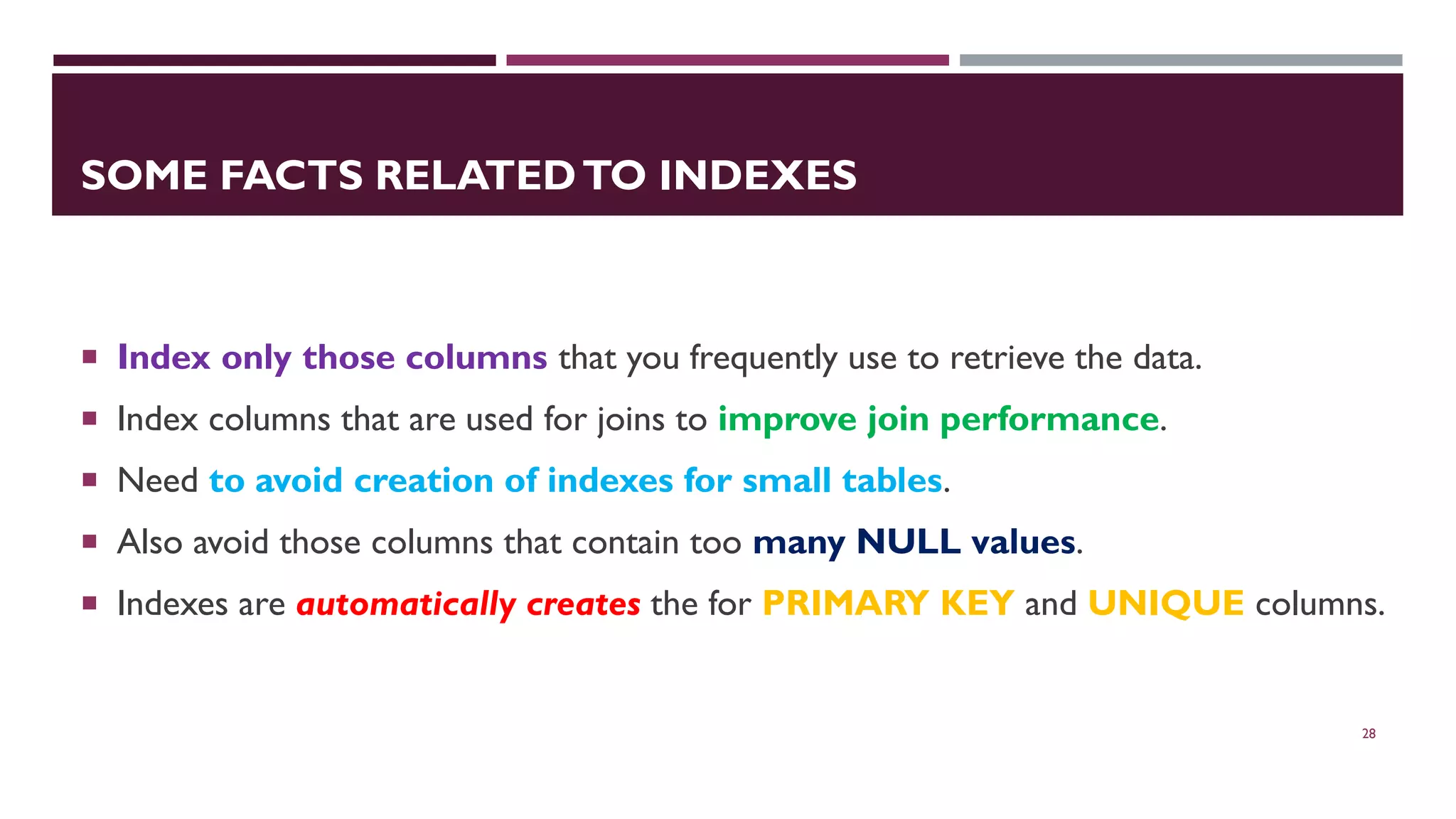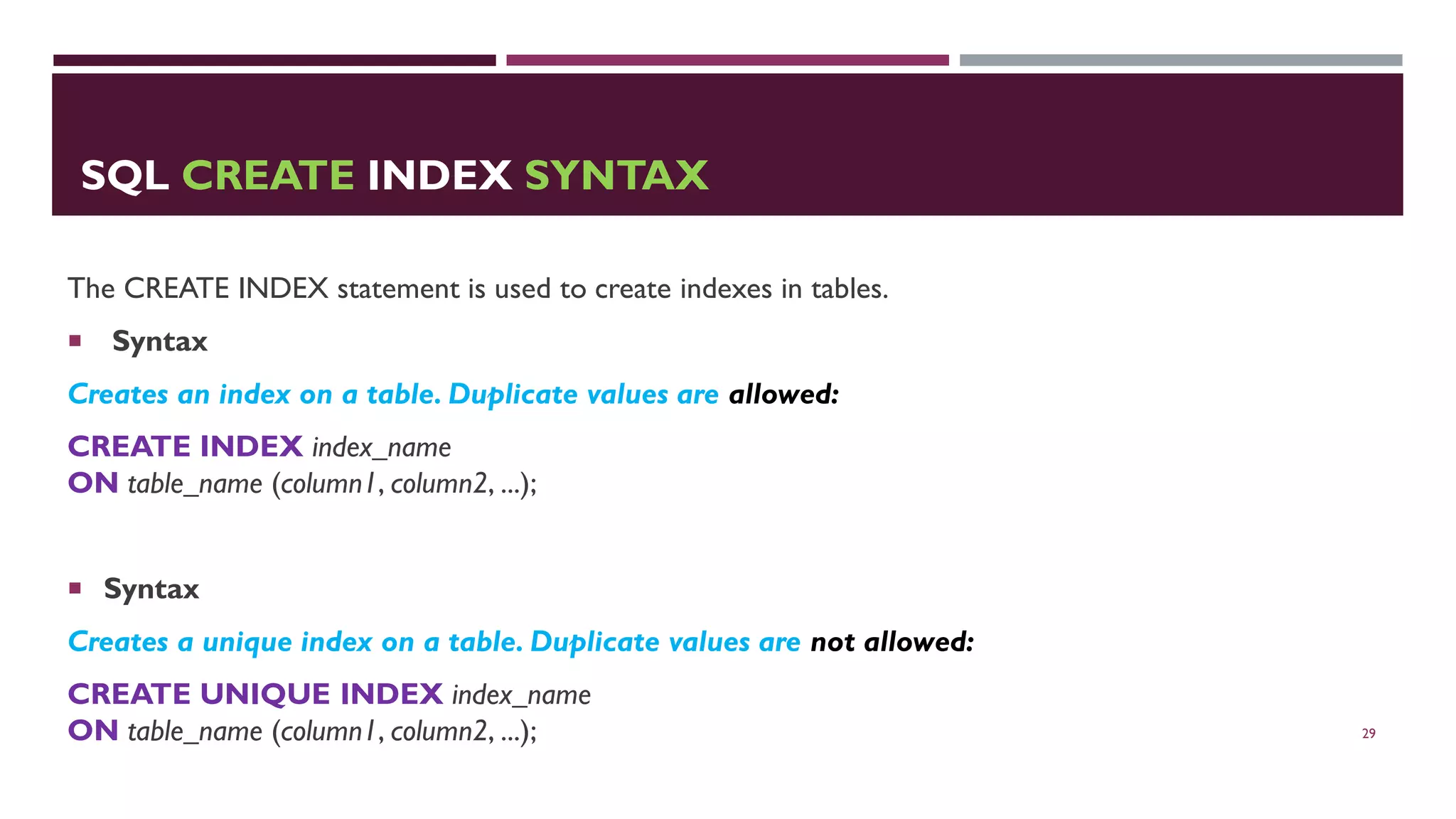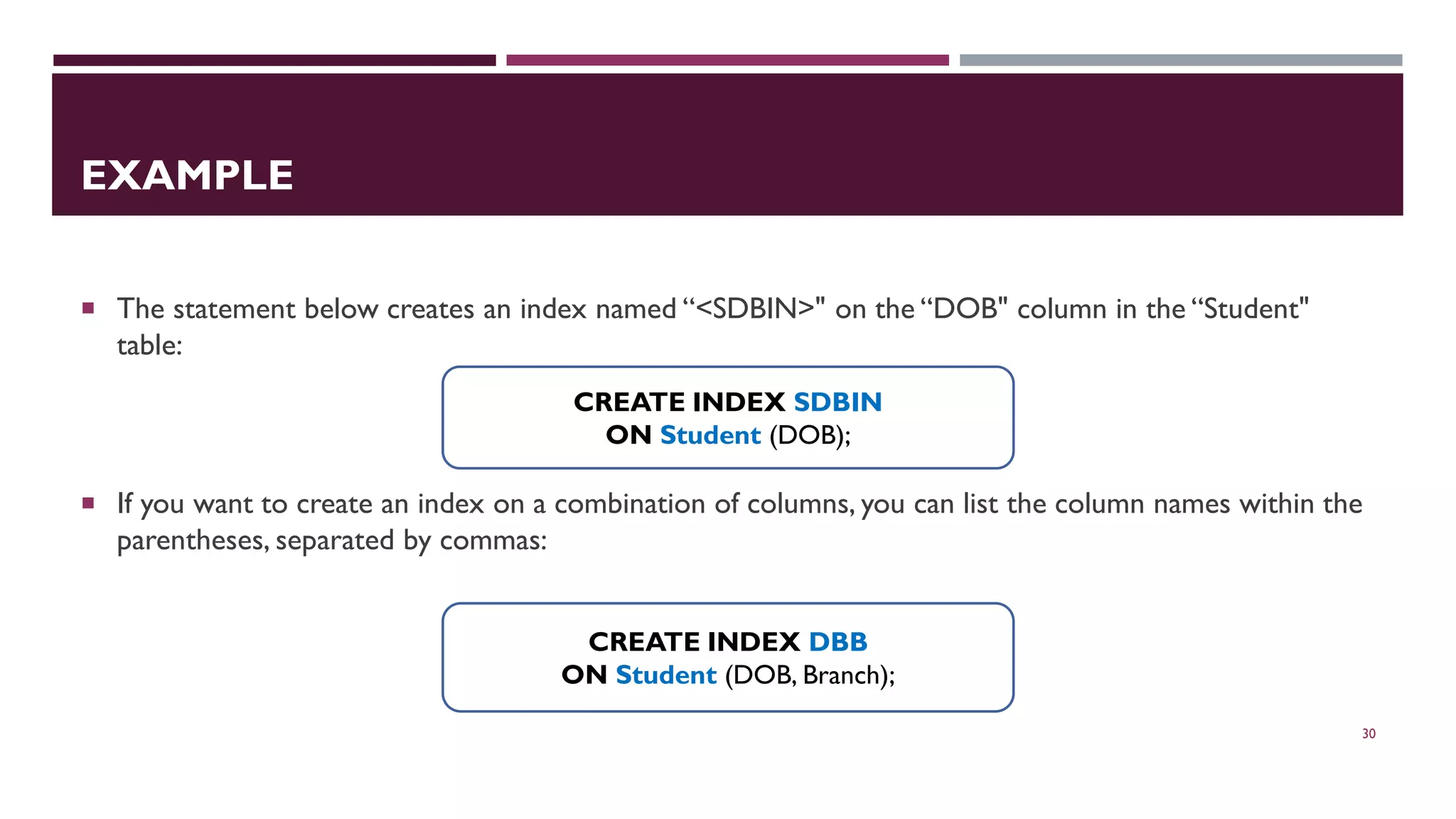The document provides an overview of SQL programming focused on regular expressions and date/time functions. It explains the purpose and syntax of regular expressions in SQL, highlighting features, metacharacters, and examples for pattern matching. Additionally, it covers various SQL date and time functions along with their syntax and usage to manipulate and retrieve date values.




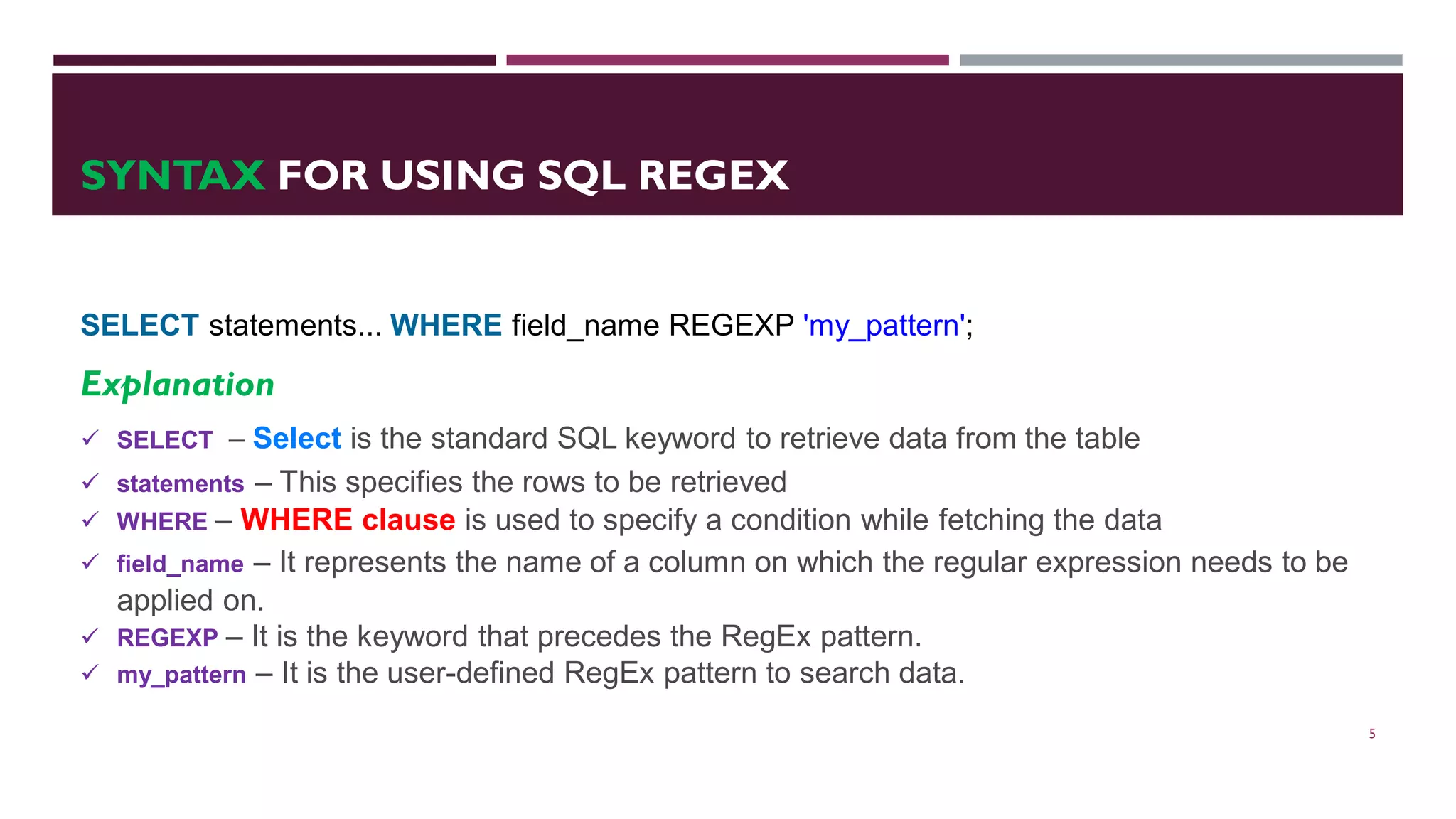
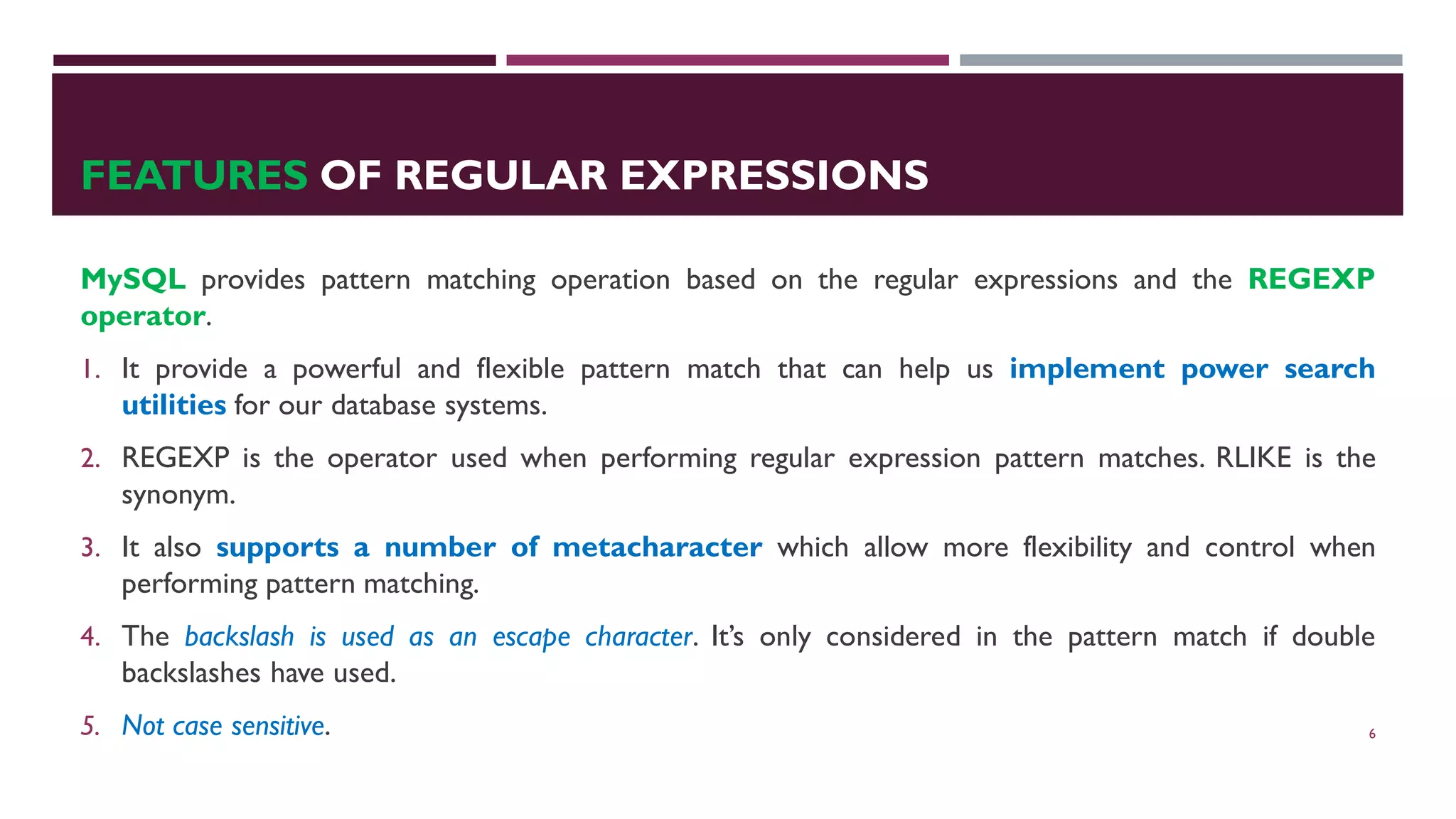
![7 Pattern Description * Zero or more instances of string preceding it + One or more instances of strings preceding it . Any single character ? Match zero or one instances of the strings preceding it. ^ caret(^) matches Beginning of string $ End of string [abc] Any character listed between the square brackets [^abc] Any character not listed between the square brackets [A-Z] match any upper case letter. [a-z] match any lower case letter [0-9] match any digit from 0 through to 9. [:class:] matches a character class i.e. [:alpha:] to match letters, [:space:] to match white space, [:punct:] is match punctuations and [:upper:] for upper class letters. p1|p2|p3 Alternation;matches any of the patterns p1, p2, or p3 {n} n instances of preceding element {m,n} m through n instances of preceding element](https://image.slidesharecdn.com/dee431introductiontomysqlslide6-200409062316/75/DEE-431-Introduction-to-MySql-Slide-6-7-2048.jpg)
![8 Class Keyword Description of Matches [[:alnum:]] Alphanumeric - any number or letter. Equivalent to [a-z], [A-Z] and [0-9] [[:alpha:]] Alpha - any letter. Equivalent to [a-z] and [A-Z] [[:blank:]] Space or Tab. Equivalent to [t] and [ ] [[:cntrl:]] ASCII Control Character [[:digit:]] Numeric. Equivalent to [0-9] [[:graph:]] Any character with the exception of space [[:lower:]] Lower case letters. Equivalent to [a-z] [[:print:]] Any printable character [[:punct:]] Characters that are neither control characters, nor alphanumeric (i.e punctuation characters) [[:space:]] Any whitespace character (tab, new line, form feed, space etc) [[:upper:]] Upper case letters. Equivalent to [A-Z] [[:xdigit:]] Any hexadecimal digit. Equivalent to [A-F], [a-f] and [0-9]](https://image.slidesharecdn.com/dee431introductiontomysqlslide6-200409062316/75/DEE-431-Introduction-to-MySql-Slide-6-8-2048.jpg)

![CONTINUE… Matches any of the patterns p1, p2, or p3(p1|p2|p3): Gives all the names containing ‘an’ or ‘ha’. Example – Charles, Sumiran. SELECT sname FROM tc WHERE sname REGEXP ‘an|ha' ; Matches any character listed between the square brackets([abc]): Gives all the names containing ‘t’ or ‘z’. Example –Tessa, Natasha. SELECT sname FROM tc WHERE sname REGEXP '[tz]' ; Matches any lower case letter between ‘a’ to ‘z’- ([a-z]) ([a-z] and (.)): Retrieve all names that contain a letter in the range of ‘m’ and ‘s’, followed by any character, followed by the letter ‘a’. Example – Thomas, carnage. Matches any single character(.) SELECT sname FROM tc WHERE sname REGEXP '[m-s].[a]' ; 10](https://image.slidesharecdn.com/dee431introductiontomysqlslide6-200409062316/75/DEE-431-Introduction-to-MySql-Slide-6-10-2048.jpg)
![CONTINUE… Matches any character pattern which have n instance of preceding element. ({n}): Example – Luna, John. SELECT * FROM tc WHERE sname REGEXP ‘^.{4}$' ; Matches any character not listed between the square brackets.([^abc]): Gives all the names not containing ‘m’ or ‘o’. Example – Kevin, John. SELECT * FROM tc WHERE sname REGEXP ‘^[^mo]' ; Matches a character class[:class:]: i.e [:lower:]- lowercase character , [:digit:] – digit characters etc. Gives all the name containing alphabetic character only. SELECT sname FROM tc WHERE sname REGEXP '[:alpha:]' ; 11](https://image.slidesharecdn.com/dee431introductiontomysqlslide6-200409062316/75/DEE-431-Introduction-to-MySql-Slide-6-11-2048.jpg)
